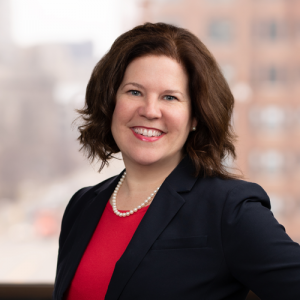This latest installment of our series on HHS Provider Relief Funding focuses on the new Medicaid Targeted Distribution, the postponement of the July 10 reporting deadline and new and updated FAQs. Since our last Bulletin posted June 12, found here, HHS has posted 45 new or modified FAQs, including 20 dated June 25. Many of these have focused on the newest Targeted Distributions: Medicaid, Safety Net Hospitals and the potential second round of High Impact Area Distributions.
Highlights and Key Takeaways
- The Medicaid Targeted Distribution is focused on providers that did not receive a payment under the $50 billion General Allocation, which may include providers like dentists, pediatricians, behavioral health professionals, etc.
- Providers eligible for the Medicaid Targeted Distribution must apply for the distribution no later than July 20, 2020.
- The CARES Act and Terms and Conditions require providers receiving Provider Relief Funding to file quarterly reports, with the first report set to be due no later than July 10, 2020. HHS published a new FAQ clarifying that providers do not need to submit this quarterly report, at least not before July 10. Reporting on the use of Relief Funds will ultimately be required, but HHS has not yet decided the form and timing of those reports.
- According to a new FAQ, Providers may retain “overpayments” of Targeted Distributions if the provider believes it will have lost revenue and/or expenses in excess of the amounts received under Targeted Distributions.
- HHS issued an FAQ stating that there is not necessarily a set period of time in which providers were bound to use the Provider Relief Fund payments; rather, HHS expects that Provider Relief Fund payments can be used as long as the provider has eligible expenses or lost revenue.
Medicaid Targeted Distribution
HHS announced a planned $15 billion distribution to providers that predominately treat Medicaid beneficiaries. There are 6 elements that must all be met to qualify for this Medicaid targeted distribution:
- Must not have received payment from the $50 billion General Allocation; and
- Must have directly billed Medicaid or CHIP for healthcare-related services during the period of January 1, 2018, to December 31, 2019, or (ii) own (on the application date) an included subsidiary that has billed Medicaid or CHIP for healthcare-related services during the period of January 1, 2018, to December 31, 2019; and
- Must have either (i) filed a federal income tax return for fiscal years 2017, 2018 or 2019; or (ii) be an entity exempt from the requirement to file a federal income tax return and have no beneficial owner that is required to file a federal income tax return. (e.g., a state-owned hospital or health care clinic); and
- Must have provided patient care after January 31, 2020; and
- Must not have permanently ceased providing patient care directly or indirectly through included subsidiaries; and
- If the applicant is an individual, have gross receipts or sales from providing patient care reported on Form 1040, Schedule C, Line 1, excluding income reported on a W-2 as a (statutory) employee.
Eligible providers must affirmatively apply for this program, and the application address is https://www.hhs.gov/sites/default/files/medicaid-provider-distribution-application-form.pdf. The portal for the Medicaid Distribution requires much more information to be submitted than the General Allocation. In addition, HHS has added several FAQs to address specific questions on this distribution, including 18 new or modified FAQs dated June 25. The payment distribution is going to be based on the same formula for the General Allocation: 2 percent of gross revenue from patient care.
Provider Relief Fund Quarterly Reporting
Section 15011 of the CARES Act requires Providers that receive over $150,000 in total relief funding to submit quarterly reports containing certain detailed information about the use of those funds within 10 days after the end of each calendar quarter to both HHS and the Pandemic Response Accountability Committee (“PRAC”). That requirement is also incorporated into the Terms and Conditions documents.
The first reporting deadline was set for July 10, 2020 for the quarter ending June 30, 2020. In an FAQ added June 13, 2020, HHS clarified that Providers do not need to submit a separate quarterly report to HHS or PRAC at this time. Instead, HHS is developing a report that it will presumably submit to PRAC on behalf of all Providers who have received Relief Fund payments that satisfies the requirements of the CARES Act.
It is not clear from the FAQ whether this is just for the initial quarterly report due on July 10, or for all Section 15011 quarterly reports. Regardless, Providers will still be subject to future reporting obligations about the receipt and use of Relief Funds. HHS has broad authority to require Provider reporting and specifically states in the new FAQ that it will be requiring Providers to submit future reports relating to the Provider’s use of Relief Fund money. According to the FAQ, HHS will provide more information on the content and due date(s) of such reports soon.
New or Updated Frequently Asked Questions
HHS has published or updated a number of FAQs since our last update. Some highlights and comments from the FAQs:
- HHS addresses the retention of Provider Relief Funding in the context of a transaction: in the instance of an asset sale, the Provider Relief Funding remains with the original recipient. In a stock sale or membership transfer, the money stays with the recipient, regardless of the owner.
- HHS has modified its interpretation of lost revenue to mean “any revenue that you as a healthcare provider lost due to coronavirus. This may include revenue losses associated with fewer outpatient visits, canceled elective procedures or services, or increased uncompensated care.” This FAQ seemingly limits this definition to March and April 2020, but another new FAQ suggests that there is not necessarily a set period of time in which providers were bound to use the Provider Relief Fund payments; rather, HHS expects that Provider Relief Fund payments can be used as long as the provider has eligible expenses or lost revenue. Further clarification on the period of time for which a provider can claim lost revenue will hopefully be provided in the reporting instructions.
- HHS addressed potential overpayments for Targeted Distributions and states providers may keep a perceived overpayment if there is an expectation the provider will have cumulative lost revenues and increased costs that are attributable to coronavirus during the COVID-19 public health emergency that exceed the payment received.
- HHS clarified that most Terms and Conditions will apply until a provider has exhausted that funding, unless the Term and Conditions contains a specific time period, like for record retention.
If you have questions or would like additional information about this topic, please contact:
- David Snow at (303) 801-3536 or dsnow@wp.hallrender.com;
- Lori Wink at (414) 721-0456 or lwink@wp.hallrender.com;
- Joseph Krause at (414) 721-0906 or jkrause@wp.hallrender.com;
- Elizabeth Elias at (317) 977-1468 or eelias@wp.hallrender.com;
- Benjamin Fee at (720) 282-2030 or bfee@wp.hallrender.com; or
- Your regular Hall Render attorney.
Hall Render’s attorneys and professionals continue to maintain the most up-to-date information and resources, which are available at our COVID-19 Resource page, through our 24/7 COVID‑19 Hotline at (317) 429-3900 or by contacting your regular Hall Render attorney.
Hall Render blog posts and articles are intended for informational purposes only. For ethical reasons, Hall Render attorneys cannot—outside of an attorney-client relationship—answer specific questions that would be legal advice.





